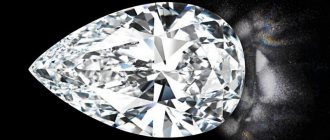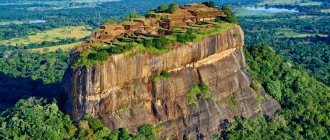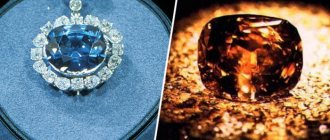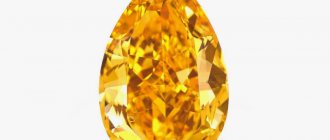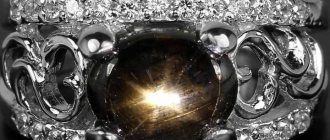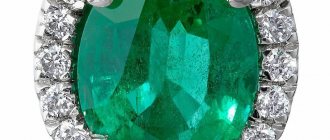Friends, in the last two articles we visited interesting parts of the world with the most unusual and beautiful mountains and rocks. But, unfortunately, it is not possible to travel there now due to the pandemic. However, tourism is beginning to recover and “come to life” - and domestic tourism will be available to us very soon. This means that it’s time to get inspired by ideas for traveling around Russia - especially if you’ve been planning a mountain hike in your native open spaces for a long time!
Kutkhiny Bati, Kamchatka
There is an amazing place in Kamchatka - Kutkhiny Baty, very light rocks among green dense forests. In ancient times, volcanoes reigned supreme in Kamchatka and constant changes took place. Lava escaping from the craters of volcanoes filled everything and cooled, forming an unprecedented rock, which was later called pumice. Centuries passed, the volcanic rock was covered with soil, and new species of animals and plants appeared in these places. But not all the lava was covered with plants and land cover; in places where there was an icy stream in the mountains and a constant wind, white rocks of unprecedented beauty, consisting of pumice, remained.
In this unique place in Kamchatka, people have long believed in their gods. The most important of them was Kutkh, who appeared to people in the form of a raven. Legends say that Kutkh’s favorite pastime was fishing on the Kuril Lake, next to the white rocks. But he could not indulge in his favorite work too often, because there were many other worries. In order to go fishing well, Kutkh each time made a boat from wood, which was called a baht. Outwardly, it resembles a familiar canoe. After fishing, Kutkh left the baht to dry in the sun. Before Kutkha’s next fishing trip, the boat had time to completely dry out and even turn to stone, because he returned for it after a long time. If you look at the majestic white rocks, they are very reminiscent of the giant boats that were once left here. Thanks to this unusual appearance, they were nicknamed Kutkha Bati.
On the Kamchatka peninsula, Kutkhiny Bati is a must-see place. You can get to them both by water and on foot. To the northeast of Kuril Lake there is a stunning view of exposed, white rocks. It is necessary to remember that in the area near the rocks you can meet bears, so you should not go through this route on your own. Using the help of a guide, surrounded by a cheerful company, you can get a lot of positive emotions, listen to ancient legends and, of course, capture this miracle of nature, Kutkhina Bati.
Location : in the Ust-Bolsheretsky region of Kamchatka, not far from the place where the Ozernaya River originates from Kuril Lake.
How to get there : getting to Kutkhini Baht is extremely difficult - it is impossible to do this by ordinary transport. The easiest way to get to Bath is by boat up the Ozernaya River from the cordon. The nearest facility where transfers are made is Kuril Lake. There are two ways to get there. The fastest is a helicopter. But this pleasure is expensive, given that the flight takes about 6 hours. In addition, the trip is sometimes delayed due to bad weather, which is not uncommon in Kamchatka. The second is to get there by car. But local roads are only suitable for jeeps, Urals, KamAZs and other similar vehicles. The road is hard and long, there is no normal route, all that remains on the way is simply to be inspired by the anticipation of interesting impressions.
The largest and most famous historical diamonds. Reference
In 1907, the diamond was presented to King Edward VII of England on his birthday. At the prices of those years, the cost of the stone was approximately 8 million pounds.
Due to its extraordinary size and one black inclusion, the stone had to be split. The processing of “Cullinan” was entrusted to the best lapidary in Europe, Joseph Assker, who worked in the famous Dutch one.
Four years later, two large, seven medium and ninety-six small diamonds of extraordinary purity were ready. The largest piece of the diamond (530.2 carats) was cut into a pear shape and was named “Cullinan I”, or “Star of Africa”. This is the world's largest diamond - it crowns the royal scepter of Great Britain. The second fragment (317.4 carats) was shaped into an emerald and named "Cullinan II", placed in the British crown. The smaller diamonds were named "Cullinan III" (94.4 carats), "Cullinan IV" (63.65 carats), and three diamonds were collectively called "Small Stars of Africa".
On June 30, 1893, a diamond was found at the Jagersfontein mine, which was considered the largest South African diamond before the discovery of the Cullinan. He was given the name "Excelsior".
The diamond had an irregular shape and was limited on one side by a cleavage plane. It had excellent qualities and had a bluish-white hue. It originally weighed 995.2 carats.
The stone was cut by an Amsterdam company in 1904. As a result, 21 stones were obtained, with the largest weighing 70 metric carats. The weight of all cut stones is 373.75 metric carats; thus, the weight loss was 62.44%. The diamonds were sold individually.
The Kohinoor Diamond, one of the English Crown Treasures, is one of the most famous historical diamonds.
Legends say that it originally belonged to the ancient Indian hero Vikramaditya (56 BC). A more reliable history of the stone can be traced back to the 12th century. In 1304, after the conquest of the Malwa principality, the diamond was kept in Delhi. The diamond was mentioned in the “Notes” of the founder of the Mughal Empire, Babur (great-grandson of Timur), and was inherited in the Mughal dynasty.
In 1739, the Persian ruler Nadir Shah captured Delhi, but did not find the famous diamond there. It turned out that the owner of the stone, Muhammad Shah, constantly wore the stone in his turban. The winner invited the loser to exchange turbans as a sign of “eternal friendship” - this is how Nadir Shah became the owner of the jewel. Seeing its sparkle, Nadir Shah exclaimed: “Koh-i-noor! "("Mountain of Light!"), thus giving the name to the stone. Later, the owners of the stone were the emirs of Afghanistan; from them he passed to the Sikh Maharajas.
Of the 18 owners of this diamond, some were treacherously killed, some fell in battle, and those who survived were expelled and died in poverty. Because of this, the stone gained a bad reputation.
In 1849, the 186-carat uncut stone was presented by the Indian Maharaja to Queen Victoria of England. She ordered it to be cut, after which the size of the stone was reduced to 109 carats. In 1911, for the coronation of Queen Mary, a new crown was created, the main decoration of which was the legendary stone.
The Regent is a legendary diamond that was discovered in 1701 by a slave miner near Golconda in India. The English governor of Madras, former pirate Thomas Pitt, bought this diamond for 20 thousand pounds sterling from a local jeweler and took it to London, where he sold it in 1717 for 125 thousand pounds sterling to the regent of France, the Duke of Orleans. From that moment on, the diamond received the name “Regent”. Later, the diamond adorned the crown with which Louis was crowned.
Along with other royal regalia, it was stolen from the Garden Furniture on August 17, 1792, at the beginning of the French Revolution, but was planted back by the thieves, apparently because they did not know how to get rid of such a famous stone without leaving it intact. After the French Revolution, the diamond belonged to Napoleon Bonaparte, who mounted it in the hilt of his sword. In the last decade of the 18th century, the diamond was used by Napoleon as collateral to provide his campaigns with everything he needed.
The Regent is currently on display in the Louvre.
The Orlov diamond, with a greenish-blue tint, weighing 200 carats (or 40 g) crowns the royal scepter of Russia. The diamond that became the basis of this diamond was found in the early 16th century in Golconda in India.
It was initially cut into a “tall rose” weighing 300 carats. Shah Jehan was dissatisfied with the cut and ordered the stone to be recut. After this, the diamond acquired its modern shape, but its weight dropped to 200 carats. It was inserted into the throne of Shah Nadir, who took possession of the city of Delhi in 1737, and was called “Derianur” (“sea of light”).
The diamond was stolen, ended up on the market in the city of Amsterdam, where Count Orlov bought it in 1773 for 400 thousand rubles for Catherine II. The queen ordered the stone to be set into her golden scepter.
The 90 carat (or 18 g) Shah diamond - yellow in color but very transparent, 3 cm long - was found in Central India, probably in 1450.
The diamond was delivered to the Shah's court in the city of Ahmednagar. In 1591, Shah Nizam ordered an inscription in Farsi to be carved on one of the faces of the diamond: “Burkhan Nizam Shah the second. 1000 year."
In the same 1591, the ruler of Northern India, the Great Mogul Akbar, captured Ahmednagar and took possession of the diamond. When Akbar’s grandson Shah Jehan (“Ruler of the World”) ascended the throne of the Mughal dynasty, he ordered another inscription to be carved on the other side of the diamond: “Son of Dehangir Shah Jeha Shah. 1051 ". According to our chronology, the year was 1641. The son of Shah Jehan, Aureng-Zeb, suspended a diamond above his throne and surrounded it with emeralds and rubies.
Until 1738, the Shah diamond was kept in the city of Delhi. In 1738, Shah Nadir attacked India, seized the diamond and took it to Persia. In 1824, the inscription “Lord Qajar Fath Ali Shah Sultan” appeared on the third face of the diamond. 1242."
In 1829, Russian diplomat and writer Alexander Griboedov was killed in the Persian capital Tehran. The Russian government demanded that those responsible be punished. The frightened Shah's court sent the Shah's son Khosrow-Mirza to St. Petersburg, who brought the Shah diamond as a gift to the Tsar. Now the stone is in the Diamond Fund in Moscow.
The Sansi diamond, weighing 101.25 carats, was found in 1064 in the Adamas Gorge of Eastern India by the merchant Jagattunga. The merchant exchanged the stone in the nearest town for two elephants, 12 camels and 80 gold coins.
After which the diamond was kept for a long time by the sultans of Central India, its last owner from this dynasty was Kut Ud Din, from whom the vizier stole the crystal along with other jewelry and part of the treasury. In 1325, the stone returned back to India and was sold to Sultan Muhammad, who set it in a silver horseshoe and carried it with him as a talisman; after him, the stone was passed on by inheritance for the next 150 years.
In the 15th century, the stone, through unknown means, ended up in Europe with the Duke of Burgundy, Charles the Bold. At the same time, this diamond was cut by a Flemish jeweler in 1475. At the same time, the diamond acquired 32 facets and lost 48 carats of weight. According to legend, the wearer of the diamond was invulnerable to enemy weapons, so Charles the Bold ordered the stone to be inserted into his helmet. In one of the battles the helmet was lost, and the next day the Duke lost his life. Having picked up the sparkling jewelry, the Swiss soldiers had absolutely no idea of the value of the thing they had received, and sold the diamond for one guilder.
In the end, the diamond was bought by the French adventurer and gambler Baron de Sancy (from whom the stone got its name). The baron regularly pawned the diamond to bankers.
Soon the diamond came into the possession of the French kings, adorning the agrave of Louis XIV for a long time. But during the French Revolution, Sancy was stolen from the royal treasury. The great Napoleon, having come to power, ordered the search for the famous diamond, but the search was fruitless.
Then the diamond came to Pavel Nikolaevich Demidov, a representative of the family of famous Ural breeders. After some time, "Sancy" strangely came into the possession of Lord Astor. The illustrious Astor family remained in possession of the relic for 72 years, until the fourth Lord Astor sold the stone to the Louvre for $1 million. This happened in 1978, and since then the famous diamond has been in the Apollo Gallery in the Louvre.
In August 2007, the largest diamond in the history of mining this precious stone was found in South Africa. The weight of the found gemstone was approximately seven thousand carats, which corresponds to 1.4 kg.
On September 24, 2009, a diamond weighing 507.55 carats, unique in its white color and purity, was found at the famous Cullinan mine in South Africa. It is estimated that its cost could be around $20 million. The stone entered the top 20 largest diamonds found.
At the same time as the unique white diamond, three stones identical in quality were also found in the mine, but smaller in size: 168 carats, 58.50 carats and 53.30 carats, respectively.
Auction house Sotheby's will hold an auction on April 7 of rare large blue diamonds that were once part of the legendary De Beers collection.
Auction house Sotheby's will hold an auction on April 7 of rare large blue diamonds that were once part of the legendary De Beers collection.
The material was prepared based on information from RIA Novosti and open sources.
Lena Pillars, Yakutia
In Yakutia, Sakha Republic, there is a unique park covering an area of 1,358 thousand hectares. It's called Lena Pillars. For 40 kilometers along the mighty Lena River there are thousands of rock formations that stretch upward, some of them reaching a height of one hundred meters. The rocks are separated from each other by deep depressions; they are quite steep and filled in places with petrified fragments of ancient rocks.
The unlike anything else, the relief formed by the Lena Pillars along the Lena looks like a huge, suddenly frozen forest area made of stone. Stone towers made of limestone were formed over millions of years through erosion processes due to weathering, shifts of the earth's crust and the unique climatic features of the region. The temperature range in Yakutia can reach one hundred degrees. In 2012, the reserve was included in the UNESCO World Heritage List.
The Evenks and Yakuts, who have lived here since time immemorial, have always considered this place sacred. No ordinary person could just come there. The wrath of the gods brought on by the arrival of outsiders was terrible. Only a select few could approach these stone sculptures. Shamans or heads of clans said that stone giants are suddenly petrified people created by unknown forces. Residents of the Khangalas ulus revere the Lena Pillars as a sacred place of their ancestors.
If you visit these rocks without the approval of those who live here, according to legend, you can offend the local natural spirits. Sailing along the Lena to the southwest of Yakutia, an incredible panorama created by nature from intricate stone figures appears before the eyes of travelers. A unique creation of nature, stretching along the steep slopes on the right side of the Lena, there are remnants for several tens of kilometers. Sometimes it may seem that this is a solid monolith of stone, however, upon approaching, the wall is divided into stone statues that are completely different from each other. Human imagination will allow one to discern in them medieval towers, temples, Gothic and Orthodox features of buildings. Or completely different figures, unknown animals, fairy-tale characters and, of course, stone giants. Before sunset, a strange illusion may arise that the rocks have come to life and are moving.
Location : on the banks of the Lena River, in the Khangalassky and Olekminsky districts (uluses), in the Republic of Sakha (Yakutia), in the northeast of Russia.
How to get there : the easiest way is with an excursion tour in Yakutia (usually includes climbing, visiting other attractions in the surrounding area, and accommodation at a tourist base). On your own: in summer you can get there by motor ships, motor boats and speedboats, and in winter by car and snowmobiles (the distance to Yakutsk is 220 kilometers).
The most valuable exhibits of the diamond fund
The Diamond Fund of the Russian Federation is an exhibition opened in 1967 in the Armory Chamber of the Moscow Kremlin, a structural division of the Gokhran of Russia. The foundation's collection includes masterpieces of jewelry from the 18th to 20th centuries, as well as nuggets and precious stones of historical and artistic significance.
The Diamond Fund collection was founded under Peter I, received most of the valuable exhibits during the reigns of Elizabeth Petrovna and Catherine II, and was replenished during the reign of the Romanovs. The meeting bore various names: the Royal Renterium, the Diamond Room, Storeroom No. 1 of the Chamber Department of the Cabinet of His Imperial Majesty. The location also changed - the collection of crown regalia and jewelry was repeatedly transferred to different rooms of the Winter Palace.
The collection was replenished from two sources: the state treasury and gifts to monarchs. The most valuable are the symbols of autocracy - the scepter, the orb, the Great Imperial Crown, which still cannot be appreciated because of its uniqueness. During the reign of Elizabeth and Catherine the Second, the Diamond Fund was significantly replenished with diamonds and various jewelry, and the first inventory of exhibits was compiled.
Since 1967, the collection has been replenished with unique stones from Russian deposits and works of modern jewelers.
The foundation's collection includes about 70 items that survived the revolution. Since the discovery of the Yakut diamond deposits, all stones over 50 carats are sent to Gokhran.
The diamond fund includes seven historical and essentially unique precious stones:
Almaz Orlov
(190 carats) adorns the scepter of Russian monarchs. Found in India, has 180 facets, greenish-bluish tint. The diamond came to Catherine II as a gift from the count on her name day. Count Orlov knew about Catherine’s passion for precious stones; in order to return Catherine’s former favor, he, without stinting, presented her with a unique diamond. The notes of the Prussian Count Solms, who was present that evening, mentioned the events that took place at dinner. “The Empress was surrounded by attention and respect, a festive atmosphere reigned everywhere, the guests greeted the hostess with gifts and flowers. The Count also did not arrive empty-handed. Joyfully anticipating Catherine's smile and delight, Gregory made a gift. He turned out to be right, the empress liked the diamond. The Empress liked the diamond so much that she ordered it to be enclosed in two rims of her scepter. But Catherine rejected the count himself, maintaining her former coldness towards him.”
Today the stone is in the Diamond Fund of the Russian Federation; since the mid-18th century it has adorned the scepter of Catherine the Second, which later became a family heirloom of the Romanov family.
The Orlov diamond is a unique diamond. Its edges are literally overgrown with history and, thanks to this cutting, it has become a more valuable and interesting specimen.
Almaz Shah
– a yellow crystal of natural shape without cutting has the inscriptions of its three previous owners. (88.7 carats). Flat portrait diamond with an area of 7.5 square meters. cm is an adornment of an exquisite gold bracelet inlaid with emeralds. (25 carats). The Shah Diamond was presented to the Russian government by the Persian prince Khosrev Mirza, the son of the heir to the throne Abbas Mirza, as compensation for the murder of Alexander Sergeevich Griboyedov during the destruction of the Russian embassy in Tehran on January 30, 1829.
It is a historical fact that Prince Khosrev-Mirza visited the imperial court in St. Petersburg in the spring of 1829 and presented a diamond to Emperor Nicholas I.
However, oriental scholars are convinced that “blood ransom” is just a legend that arose thanks to the story “The Death of Vazir-Mukhtar” by Yuri Nikolaevich Tynyanov. In reality, the diplomatic mission of the Persian prince had slightly different goals. The Turkmanchay Treaty of 1828 obliged Persia to pay Russia an indemnity of 10 kururs (20 million rubles). By December 1828, the Persian court was only able to pay 8 kururs. The prince's mission brought great valuables - not only the Shah, but also others that were supposed to pay off the rest of the indemnity: precious stones, valuable manuscripts, gold, Arabian horses and Kashmiri carpets. As Iranian scholar Vladimir Fedorovich Minorsky established in 1923, the Russian government did not demand payment for the shed blood of the Russian delegation, but only to send an embassy with an apology and punish the perpetrators.
After the visit of Khosrev-Mirza, Emperor Nicholas I forgave Persia the remainder of the indemnity and handed over to his diplomatic mission such rich gifts from the Russian crown that 193 horses and 16 carts were required to transport them. The main reason for the emperor's leniency towards Persia was its neutrality during the Russian-Turkish War of 1828-1829.
The Diamond Fund also presents an amazing absolutely flat diamond weighing 25 carats and a total area of 7.5 square meters. cm, set in an exquisite gold bracelet, made in the Gothic style. This is a “ portrait” diamond
, under which a colored miniature of a portrait of Emperor Alexander I is inserted. This transparent stone is considered the largest portrait diamond ever used in the world. The diamond, together with a bracelet made to order in France, arrived in Russia in the 19th century. Now it is kept in the collection of the Diamond Fund among seven historical famous stones. The bracelet itself is a rare masterpiece of jewelry; a “portrait” diamond in an elegant gold frame inlaid with enamel and emeralds is a magnificent addition to the bracelet.
Red spinel
before the coronation of Catherine the Great, she took her place in the Great Imperial Crown along with 5,000 diamonds (the weight of the crown is more than 2 kg). A stone of unique size, transparency and purity. (399 carats), decorating the symbol of the Diamond Fund - the Great Imperial Crown. The Great Imperial Crown, a marvel of jewelry art, was made in 1762 for the coronation of Empress Catherine the Great by court jewelers Georg Eckart and Jeremiah Pozier; Georg Eckart supervised the work and created the sketch and frame of the crown, and Pauzier was in charge of selecting the stones. The crown itself is made of gold in the form of traditional openwork hemispheres, decorated with a continuous scattering of diamond decorative flowers. The crown contains 4,936 diamonds weighing a total of 2,858 carats, shimmering with multi-colored rainbow sparkles, and 75 pearls. The weight of this most expensive crown in the world is almost 2 kg. And it is crowned with a noble red spinel, amazing in its rarity and beauty. The stone was purchased in 1676 from the Chinese Emperor Kangxi and brought to Rus' by the scientist and writer Nikolai Spafariy, who was in the diplomatic service under Tsar Alexei Mikhailovich in Beijing (China) from 1675 to 1678. This famous stone, for a long time mistakenly considered a ruby, roamed from one crown to another and originally decorated the imperial headdress of Elizabeth Petrovna. Such a large noble spinel of even color and ideal purity and transparency is the greatest rarity, and there is no equal in the world.
Step cut emerald
framed by diamonds and crowned with an amazing brooch. The stone was found in Colombia in the 15th century and came to Russia at the beginning of the 19th century. (136 carats).
A beautiful Colombian emerald set in a brooch (Russia, late 19th century) is also one of the seven historical stones in the Diamond Fund’s collection. The size of the stone (weight 136.25 carats), the uniform distribution of the rich green color and purity make it possible to classify it as a unique creation of nature. The emerald is set in an elegant brooch made of precious metals, studded with diamonds. The stepped cut of the stone goes perfectly with decorative monograms and leaves made of gold and silver. This amazing stone was found and brought from Colombia in the 15th-16th centuries, and in the first half of the 19th century it came to Russia and was set into a brooch by an unknown jeweler.
Sapphire from Ceylon
the largest in the world adorns a 19th century brooch. Purity, transparency, color saturation combined with a unique cut amazes the imagination. (260 carats).
It was purchased by Russian Tsar Alexander II as a gift to his wife at an exhibition in London. The stone is set in an openwork gold frame of an exquisite brooch, inlaid with many small and large diamonds. This sapphire is considered the largest and most beautiful sapphire in the world. Its weight is almost 260 carats, the original cut is unique, and the amazing lilac-blue rich color combined with the transparency and purity of the stone amazes the imagination.
In addition to its amazing color, the stone is also remarkable for its processing. It has more than 100 facets, and the diamond setting was chosen with extreme taste. The upper part of the stone is completely covered with small hexagonal facets, and rays of light, breaking on this multifaceted surface, flow in sparkling fountains in different directions, creating a pleasant soft play. Diamonds enhance the brilliance of this beautiful gem. The brooch was made in the middle of the 19th century; its stepped shape successfully hid the excessive thickness of the stone, enclosed in a high, light openwork caste. Unfortunately, almost nothing is known about the origin of this sapphire, and only according to legend, it also traveled a long way from India through Persia and the Caucasus before reaching Russia.
Chrysolite
olive green found on an island in the Red Sea. Thanks to the secrets of cutting, the appearance of radiance of the stone is created. (Over 190 carats). The giant chrysolite has no equal in the whole world for its purity, transparency and beauty of color. The large, slightly convex upper platform is surrounded by stepped facets, while the reverse side of the stone is less conventionally cut and covered with a complex combination of numerous irregular quadrangular facets. The stone has an elongated oval shape with perimeter dimensions of 5.2 x 3.5 cm and reaches 1.05 cm in thickness. In the past, it was set in gold with thirty diamonds. Historians claim that this particular stone is the supposedly “emerald” through which the Roman Emperor Nero looked at the fire of Rome that he himself had caused. In the numerous facets of this precious stone, sparkling rays of light of all green shades are refracted from its depth. This natural wonder completes the collection of seven historical stones.
In the 20th century, after the discovery of Yakut diamonds, the collection was replenished with the “Star of Yakutia” diamond of 232 carats,
"Big Bear"
“Progress”, “Great initiative”.
Mount Demerdzhi, Crimea
Crimea is famous for its picturesque places. One of them is perhaps the most unusual - Mount Demerdzhi. Near the Angarsk Falls, driving along the highway connecting Alushta and Simferopol, the majestic and very unusual Demerdzhi rises, the appearance of which resembles a medieval fortress.
Demerdzhi translated from the language of the local population means “blacksmith”. A beautiful ancient legend tells that hardworking and peaceful people once lived in these places. But one day, enemies came to this land and wanted to enslave it. Among the locals was a traitorous blacksmith who lived at the very top of Funa (the early name of the mountain). He made many weapons in his forge and gave them to his enemies. A local girl named Maria decided to go to him and persuade him not to make weapons for the enslavers of this land. But the blacksmith was adamant and killed Maria. At the same moment, a huge mountain trembled and collapsed, covering everyone who came to a foreign land. Since then, this mountain range has been called Demerdzhi.
The composition of the rock formation is limestone, sand, clay and conglomerates. Some of the rocks that make up Demerdzhi are about one billion years old. This place is very popular among scientists. A lot of scientific research is carried out here. Demerdzhi is unique in that, depending on the time of day, the mountain seems to be painted in different colors. This place is ideal for creativity, which is why artists are frequent guests here.
On the slope of the mountain is the famous Valley of Ghosts. It seems to be strewn with various figures made from stone by an unknown artist. They see both people and unknown animals, towers and bizarre birds; everything that human imagination is capable of can be seen in these boulders. According to legend, when the mountain is shrouded in night, they all come to life.
Among the chaos of stones, near fragments of rock three stories high, you can find a crystal clear spring. The path leading to Demerdzhi begins near it. Local guides vying with each other to invite you for a horse ride. But you need to know that the path to the Valley of Ghosts is only on foot, as is the climb to the top of the mountain. In fact, this climb is not difficult, but it is still best to wear sports shoes. On the loose slope of Demerdzhi, which is quite steep, it is of course more convenient to walk. And as you climb up, they will definitely tell you this beautiful and sad tale about the history of “Blacksmith Mountain”.
Location : a few kilometers from Alushta, towards Simferopol.
How to get there : from Alushta by trolleybus No. 51, 52, 54, 55 to the “Angarsky Pass” stop on the Simferopol – Alushta route. Or take minibus No. 107 from Alushta, and from Simferopol - by trolleybus along the Simferopol - Alushta highway and transfer to the same minibus No. 107 at the Luchistoye stop. From the village of Luchistoye, for example, you can only walk along the Valley of Ghosts, and it will take about 3-4 hours. There are also organized excursions with climbing the mountain or walking through the Valley of Ghosts from Simferopol.
What and how are stones formed?
The process of stone formation is long and continuous, occurring on land and in water. It is influenced by many factors: weather, location, temperature, processes occurring in the earth, etc.
Stones in nature are formed as a result of:
- destruction of sedimentary rocks formed under the influence of wind and water (sandstones, limestones, marble);
- changes in igneous and sedimentary rocks under the influence of water gas pressure and high temperature inside the planet (for example, quartzite);
- ejection of igneous rocks from the depths by volcanoes (for example, granite).
A piece of rock, limestone, sandstone, meteorite, a huge boulder somewhere in the steppe, in a field, in the mountains, a small pebble under your feet - these are all stones, and they consist of different substances. Wind, precipitation, water did their job and gave them some form. Sometimes in nature there are stones of such unusual shapes that it is difficult to exclude human involvement.
Akkurum tract, Altai
Another interesting natural sculpture is the Akkurum tract, famous for its unusual stone mushrooms. It is located in the Altai Nature Reserve, and more specifically on the slopes of a mountain located in the Karusu gorge. Clusters of blocks of stone are called kurums. Stone mushrooms are one of them. They were formed in a long-term process of washing out and weathering of rocks at the place where they reached the surface of the earth. On the right bank of the Chulymash River, which flows into a lake called Teletskoye, there are stone mushrooms. The overall picture of this valley is simply mesmerizing.
Stone mushrooms are slabs of stone that rest on the same stone pillars, like mushroom caps. The formation of such an unusual species is explained quite simply. The rock from which the stone hats were formed is much stronger than the rock that created the base. Thus, the top of the unusual natural sculpture is less susceptible to weathering.
It is very unusual that “mushrooms” can move along the mountainside, which contains a lot of clay and rubble. Mushrooms are made of stone and are currently “growing” and collapsing. Over the course of several years, the appearance of such a clearing may change, or even disappear completely. Modern researchers suggest that this may take very little time - from 30 to 50 years.
Location : on the Chulyshman River (its right bank) at its confluence with the Chulcha River.
GPS coordinates: 51.113961, 87.974271.
How to get there : cannot be reached by public transport or taxi. All roads to the Altai Mountains go through the city of Biysk, so the description will be from this city. The distance from Biysk is about 650 km, from Gorno-Altaisk - 490 km, and from the nearest village - about 5 kilometers. The walking trail to the tract starts from the “Stone Mushrooms” camping site, which can be reached by car along the following route: from Biysk or Gorno-Altaisk you need to drive along the Chuysky tract to the village of Aktash, then leave the tract onto a gravel road towards the village of Ulagan, then move to the village of Balyktuyul, from which, through the Katu-Yaryk pass, take a dirt road to the campsite. The turn to the campsite is marked by a camp site banner, from which the drive is about 500 meters. Please note that it is best to refuel your car for the last time in the village of Aktash, since after that there will be no gas stations on the road. From the campsite itself, you will need to take a rented boat to another birch of the Chulyshman River (500 rubles per person - there and back), and then walk to the tract about 4 kilometers along the path running near the Karas River. Directly to the mushrooms themselves you need to climb 120 meters up the slope.
Route for the car option : Biysk → Srostki → Maima → Manzherok → Ust-Sema → Shebalino → Seminsky Pass → Ongudai → Inya → Aktash → Ulagan → Koo → Stone mushrooms
Sayan megaliths, Krasnoyarsk Territory
Kuturchinskoye Belogorye is a fairly popular place among hiking enthusiasts from Krasnoyarsk. Located only about 200 kilometers from the city, it doesn’t take too long to get there. And the places are quite picturesque. In this place there are Sayan megaliths - huge stones and prehistoric structures made of large blocks, put together as if by unknown forces.
Together with the unusual nature, this place is considered anomalous - some adhere to the version that the creations made of stone are traces of an alien civilization. Reading the stories of people who have been here, you can even notice a clearly visible pattern - there is practically no one who would not write about the strange feeling of artificiality of the observed “natural monuments”. The many comments from readers about the similarity of the rocks with either a wall or a tower are also striking. No one directly puts forward versions of artificial origin, but everyone perceives a striking similarity with buildings that survived an unprecedented cataclysm.
Some even believe that the Atlanteans and Hyperboreans lived here since ancient times, built castles and erected defensive walls, fought with each other and cleared landing sites for alien ships. The Mansky pillars, in their opinion, are the remains of megalithic structures, deliberately destroyed by a supernova explosion by some weapon unknown to us. Here, for example, is masonry that is clearly not of natural origin, because “nature cannot create straight lines.”
There are a lot of hiking routes in this area - it is unrealistic to cover a large area in one hike, so many return here several times to explore unusual and mysterious places and feel the energy of ancient megaliths...
Location : within the borders of the Eastern Sayan, the ridge is located between the Mana River and its right tributary Mina.
How to get there : The distance from Krasnoyarsk to the ridge is 230 km, about 3 hours by car and 30 minutes on foot. From Krasnoyarsk to the village of Vyezhy Log. Next we cross the bridge over Manu, pass Khabaydak and before the village of Ivanovka (without entering the village) turn sharply to the right. After about a kilometer there is a small lake (quarry), after which the road begins to climb uphill, about 2 km. A little before reaching the “pass”, a very obscure forest road goes off to the left. In good weather, you can get to this place by a regular car, then only by a prepared one. Then follow the forest road, which in one place crosses a wide ditch, and approximately 150 m from the main road there is a small hut. From Izbushka to the nearest rock is a 30-minute walk.
Manpupuner, Komi Republic
The title of one of the seven wonders of Russia was rightfully awarded to a mysterious and beautiful place called Manpupuner. It also has other names - Mansi blockheads, Man-Pupyg-Ner, Pupy, Blockhead-Iz.
These are weathering pillars that are located in the Northern Urals. Manpupuner is a small mountain of idols, this is exactly the translation of this name from the language of the Mansi people. Seven stone statues rise majestically on the Ural plateau. Moreover, six of them are lined up in one row, and the seventh is away from them. The height of these remains is from 30 to 42 meters. They all have completely different, bizarre shapes.
The Mansi people forbade ordinary people to go up to these statues; the place was sacred to them. One of the ancient legends says that in ancient times seven giants came here and wanted to wipe out the Vogul people from the face of the earth. But seeing the Vogul mountain called Yalping-ner, the main giant shaman recoiled in fear and threw his tambourine at the top of the mountain. Afterwards, all seven giants were petrified with fear, and the mountain has since been called Koyp, which means “drum”.
Despite the fact that these sculptures seem to have been created by man, they are the work of nature itself. Over the millions of years that have passed, the Ural Mountains have been weathered and those rocks that were weaker have been destroyed. Solid rocks, on the contrary, withstood them and a miracle was created that can be seen today. In 2008, this place officially joined the list of wonders of Russia. The plateau on which Manpupuner is located is located in such a way that it can only be reached by helicopter. Thanks to this, the virgin, undisturbed beauty of this place has been preserved. You can reach it on foot in 10-14 days, and only if you have extensive experience in hiking.
Location : in the Ural Mountains on the territory of the Troitsko-Pechora region of the Komi Republic, almost on the border with the Khanty-Mansiysk Autonomous Okrug.
How to get there : car routes have been closed since 2004, the easiest but also the most expensive option is a helicopter (30,000 rubles per person per flight). In winter you can get there by snowmobile or on skis (only with good physical fitness); extreme sports enthusiasts choose hiking in the summer. Hiking and skiing routes on the plateau are accessible from the Three Rivers area in the Khanty-Mansi Autonomous Okrug, where the Bolshaya Sosva, Kotliya and Lutsoulya rivers merge, and from the territory of the Sverdlovsk region - from the source of the Pechora River through Mount Otorten and the Dyatlov Pass. At the same time, it is very important that to travel along the route you need to obtain permission from the Pechora-Ilych Nature Reserve, and this can only be done officially by joining an organized tourist group. Helicopter organized excursion starts from 45,000 rubles. (from Ukhta in the Komi Republic).
Uluru Stone - one of the wonders of the world
Hundreds of tourists come every day to look at the huge monolith stone located in the central part of Australia. The stone is amazing in everything and amazes with its size, unusual appearance, structure, and color. Is under the protection of UNESCO.
25 km from it there is Mount Olgoy-Kata/Tyutoi and there is an assumption that the mountain and stone are only visible parts of a huge underground monolith hidden in the thickness of the Earth. The aborigines call the mountain “Many Heads” - there are 36 rocks on it, one of them rises 546 m above the body of the mountain.
The Uluru stone, also known as Ayres Rock, is called a rock, a monolith. This is the largest stone in the world and its age is about 680 million years. To walk around its perimeter, you need to walk 3.6 km long, 2.9 km wide, and to climb to the top, you need to climb 348 m on smooth steep slopes.
Sometimes, due to its unusual color, it is called a stone from Mars - it consists of red sandstone. The reddish color is explained by a large amount of iron and changes several times during the day: in the morning the stone is purple, in the afternoon it is golden, and at sunset it is already dark brick shades.
When you look at a block from afar, you get the feeling that its surface is absolutely smooth, but in reality it is covered with cracks that appear as a result of differences in night and day temperatures. The base of the megalith is indented with caves, on the walls of which there are many ancient petroglyphs that attract historical researchers.
Since recently (1985), when a local tribe leased the land with the stone for 99 years, tourism has been actively developing and the number of people wishing to climb the giant stone has increased, although it is quite difficult. But difficulties do not stop extreme lovers.
Rock-Dragon Cape Fiolent, Crimea
The southwest of Crimea can boast of having one of the most beautiful places for tourists. This is Cape Fiolent. It stretches for ten kilometers along the coast. The landscapes that can be seen here are truly fantastic. Near Fiolent there is also a reserve with the same name. For tourists, the name Fiolent reminds of the color “purple”, but this is in no way connected. In the language of the local residents there is a word “felenk” (tiger), which is where the name of the cape comes from. Tigers have never lived on the peninsula, and the name comes from the alternation of colored rocks, which resembles the color scheme of a tiger skin.
Here you can find a mysterious and beautiful rock called the Dragon. It looks like the head of either a crocodile or a dragon. At the same time, you can easily see the eye of a fairy-tale animal, which never closes. Nature did her best in this place like a true artist. You can get there by following the path from the “Caravella” stop to the cape called Vinogradny. The sunset paints the Dragon's head in unusual colors, such a sight will be remembered for a lifetime.
If you examine other rocks of the cape, you can find other figures and silhouettes of strange creatures...
You can walk along the “Staircase of Health”. This is accessible to the most patient and hardy, because it consists of 785 steps. This staircase is the connection between the beach and St. George's Monastery. For those who go up and down it every day, the staircase becomes a “simulator”, better than any fitness.
In this area there is the Cape Fiolent landscape reserve. It is rare to find oaks and hornbeams growing directly on the rocks. There are also absolutely amazing caves here. Any vacationer will be able to enjoy an excellent sea panorama and the incredible beauty of the rocks themselves.
Location : on the southwestern coast of Crimea, between Sevastopol and Balaklava (5 kilometers from the outskirts of Sevastopol).
How to get there : you can get to Cape Fiolent by car or by public transport from Sevastopol (go to the “5 km” stop) - for example, by bus No. 17, 25, 26, minibus No. 17, 20, 25, 26, then you need to change and get to the “Perekrestok” or “Fiolent” stops by bus No. 24 or No. 3. You can walk to the Dragon Rock from the Caravella stop to Cape Vinogradny.
Marble Canyon Ruskeala, Karelia
There is a stunning place in Karelia, a pearl of natural mastery - the Ruskeala Natural Park. People come here to enjoy nature and admire the Marble Canyon. In the last century, marble was actively mined here, but after the end of the war, mining stopped, and the canyon began to be filled with crystal clear water. Marble mining in these places began by the Swedes in the seventeenth century, but after the transfer of this area to Russia, the Ruskeala Canyon became one of the main suppliers of marble stone in Russia.
Canyon in summer
The Tokhmajoki River near which the park is located is located near a city called Sortavala. The river has a fast flow and has riffles and rapids. Due to their presence, you can enjoy the view of the beautiful waterfalls. One of them, the Ruskeala cascade, is simply a must-see. The views of the Marble Canyon are varied. These are rocks, grottoes, stone shores with bizarre shapes, adits and, of course, marble magically visible through the water surface. Taking a boat for a walk on the lake, you can see all the beauty of this place. The depth of the lake itself can reach 50 meters. And the dimensions of the canyon itself are 100 meters wide by 460 meters long.
I visited Ruskeala in winter - the park is interesting, there are several walking routes for sightseeing. There is beautiful nature, silence and grace all around!
Well, probably another small plus of Ruskeala is the illumination, which was initially announced as a parody of the northern lights!
The lake is filled with tear-clear groundwater coming from underground, due to this there are no algae at the bottom and you can even see equipment that was once abandoned in a quarry in the clear water.
For tourists, observation decks were built around the entire lake; from there you can admire the picturesque rocks and the turquoise lake itself. In winter, when the water in the lake freezes, many tourists can walk to the beautiful grottoes and mines.
Location : in the southwest of Karelia, approximately 25 kilometers north of the Ladoga skerries and the city of Sortavala.
How to get there : the easiest way is as part of a bus excursion from St. Petersburg (cost from 2,000 rubles). It’s also easy to get there on your own - first we go by train St. Petersburg - Kostomuksha (from Ladozhsky station) to the city of Sortavala (travel time 5.5 hours), and from Sortavala there is a bus to Vyartsilya, which stops in Ruskeala. There is also a retro train from Sortavala - tickets must be purchased in advance on the Russian Railways website (may be sold out). You can also order a taxi (about 600 rubles). By car we drive along the Priozerskoye Highway through Priozersk along the A-129 highway - a distance of 250 km.
Visit : entrance ticket costs 300 rubles, for children 150 rubles. Schedule and operating hours: Mon-Thu and Sun - 10:00-19:00, Fri-Sat - 10:00-21:00.
Have you been able to visit any of these places?

